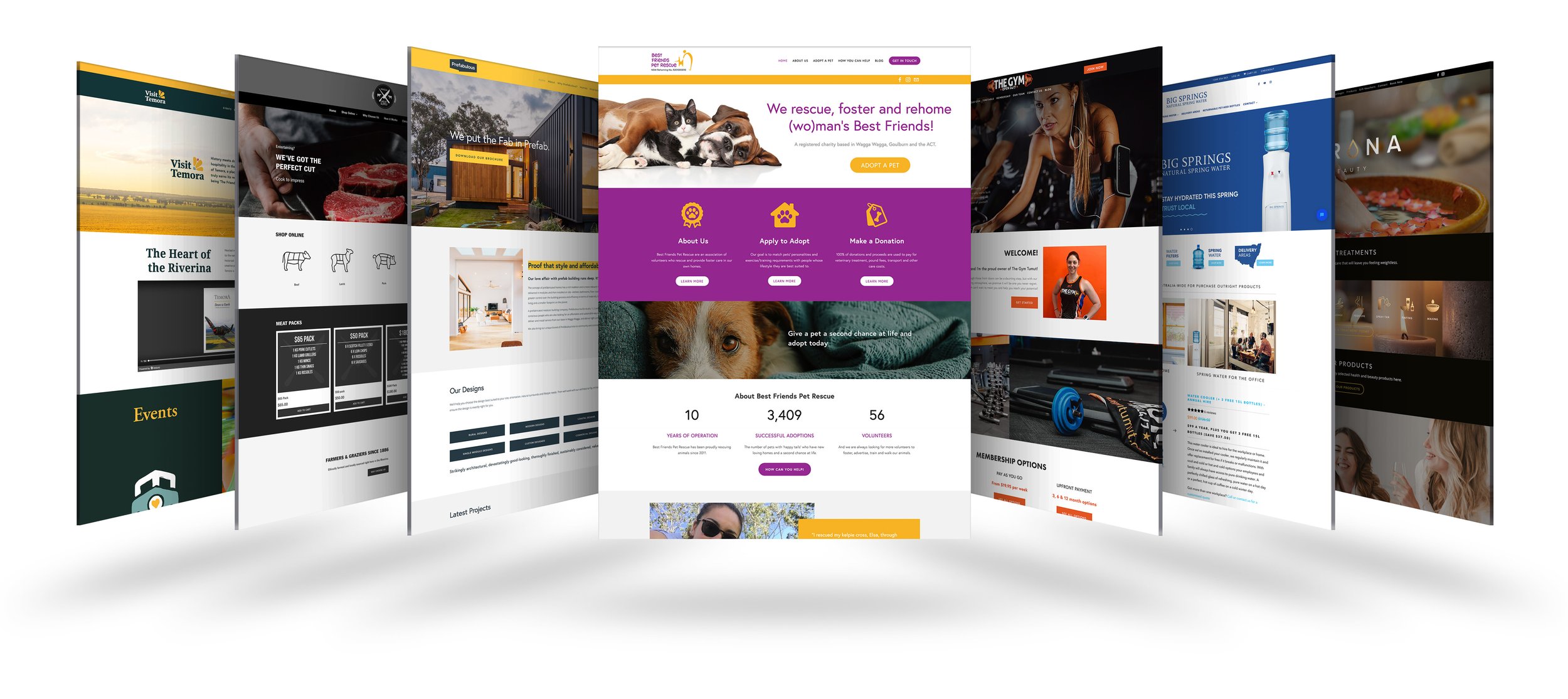Top Tips for Developing an Impactful Website Layout That Transforms
In today's digital landscape, the significance of an impactful site layout can not be overstated, particularly when it concerns converting visitors into clients. To accomplish this, one need to think about a selection of elements, including comprehending the target market, focusing on individual experience, and optimizing for mobile platforms. Furthermore, the critical usage of compelling call-to-actions and a well-defined visual pecking order plays an important duty in leading customers with their journey. As we check out these important aspects, it ends up being evident that the success of your website pivots on greater than just looks; it calls for a thoughtful technique to style and functionality.

Understand Your Target Market
Comprehending your target audience is fundamental to effective web site layout, as it prepares for producing an appealing individual experience. Identifying who your users are, including their demographics, choices, and behaviors, allows designers to customize the website's material, layout, and performance to meet details requirements.
Performing complete market research is critical in this procedure. Surveys, meetings, and analytics can provide useful insights into customer expectations and pain factors. By assembling this data, developers can develop user characters that represent different sections of the target market, guaranteeing that style choices are informed and appropriate.
In addition, understanding the target market aids in selecting suitable style elements such as shade systems, typography, and images that resonate with users. A web site that talks straight to its audience fosters a sense of link and trust fund, encouraging longer check outs and greater conversion prices.
Inevitably, a user-centered approach to site design not only improves individual contentment but also supports company objectives by driving interaction and commitment. By focusing on the demands and choices of the target market, a website can effectively serve its objective and attain wanted outcomes.
Prioritize User Experience
To enhance the overall effectiveness of a website, focusing on customer experience (UX) is crucial (Website Design). A properly designed UX guarantees that site visitors can navigate the site effortlessly, locate details promptly, and involve with content meaningfully. This results in boosted individual fulfillment and higher conversion prices
Begin by applying instinctive navigation. Menus ought to be logically structured, permitting customers to find essential locations of the site with minimal initiative. Uniformity in design components, such as shade systems and typefaces, promotes familiarity, which is critical for keeping user involvement.
In addition, consider the filling rate of your site. A hold-up of just a few secs can lead to substantial drop-offs, as individuals are much less likely to await a slow-loading web page. Improving images and enhancing code can enhance efficiency and retain site visitors.
Moreover, quality in content discussion is important. Usage succinct, engaging language and break up text with visuals to boost readability. By prioritizing user experience, you not just produce an extra pleasurable setting for site visitors however likewise reinforce your brand's trustworthiness. Inevitably, a focus on UX is an investment in the long-lasting success of your internet site.
Optimize for Mobile Instruments
Optimizing for mobile devices is important in today's digital landscape, where a boosting variety of individuals gain access to web sites with smart devices and click this site tablets. A mobile-friendly design not just boosts customer experience however likewise plays a considerable role in improving search engine rankings. To achieve this, it is essential to take on a receptive style that immediately adapts to various display dimensions and positionings.

Packing rate is an additional vital aspect; mobile customers are commonly much less patient and anticipate rapid access to information. By focusing on mobile optimization, you guarantee that your site continues to be competitive and properly engages a more comprehensive audience.
Use Engaging Call-to-Actions
A website's performance usually rests on its ability to direct site visitors toward preferred activities, making engaging call-to-actions (CTAs) crucial elements of layout. CTAs function as the essential points that guide individuals to involve with the website, whether that suggests buying, authorizing up for a newsletter, or downloading a resource.
To produce effective CTAs, clarity is paramount. Use succinct language that clearly connects the activity you want the user to take.
Furthermore, the design of CTAs need to attract attention without being interfering. Use contrasting shades and clear font styles to ensure they record focus. Furthermore, consider making use of directional hints, such as arrows or photos, to assist users toward these switches. By concentrating on these elements, organizations can significantly boost individual engagement, driving conversions and inevitably accomplishing their site's objectives.
Concentrate On Visual Hierarchy
Efficient internet site style relies greatly on a well-structured visual power structure that overviews users with content seamlessly. By organizing components in a way that focuses on details, developers can boost user experience and assist in decision-making. This includes making use of size, shade, comparison, and spacing strategically to accentuate one of the most crucial elements of a page.
The use of larger typefaces for headings and subheadings he said establishes a clear distinction in between different sections, enabling individuals to check material effortlessly. Additionally, utilizing different shades for switches and calls-to-action can record individual interest and urge communication. Whitespace is an additional important element; it stops mess and makes it possible for users to focus on crucial messages without distractions.
Pictures and graphics must match the message while additionally sticking to the well-known power structure, enhancing the total message (Website Design). Consistency in design components, such as color pattern and typography, more reinforces the aesthetic hierarchy, making navigation user-friendly

Conclusion
In verdict, efficient site layout requires a comprehensive understanding of the target audience, prioritization of individual experience, and mobile optimization. Ultimately, a well-executed web site design offers as a crucial part in driving user activities and achieving service objectives.